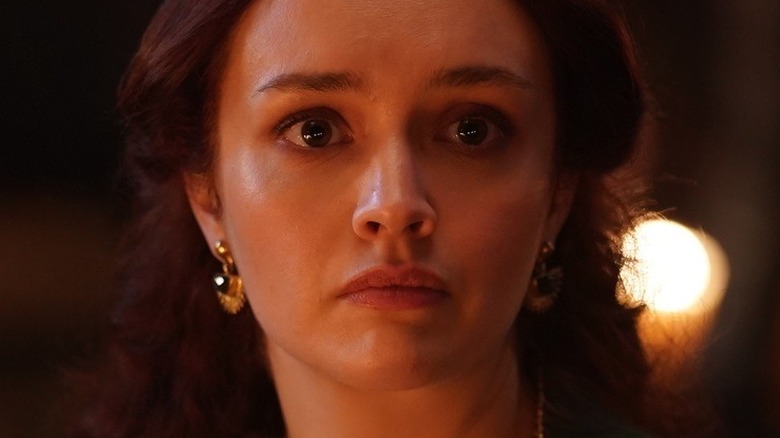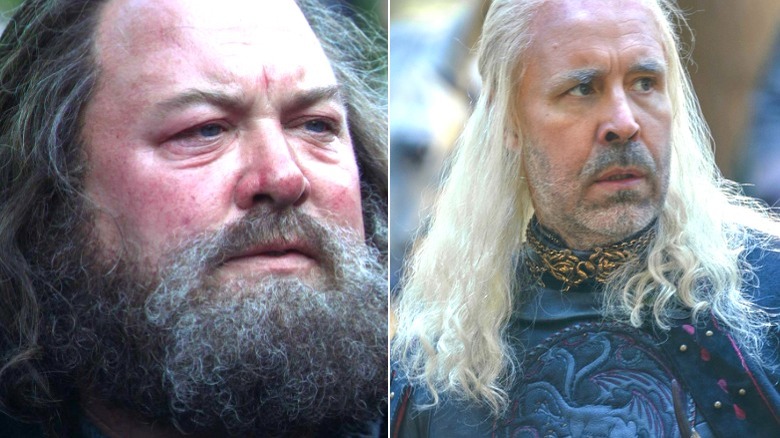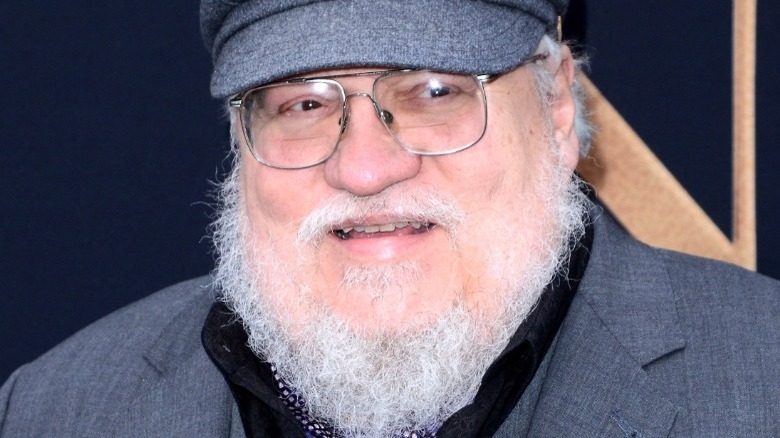All Those Shocking Game Of Thrones Scenes Are Changing The Way People Watch House Of The Dragon
Contains spoilers for "House of the Dragon" Episode 3
During the 2010s, "Game of Thrones," along with some assistance from AMC's "The Walking Dead," helped establish that no character, rather prominent or supporting, was ever safe. In its first season alone, "Game of Thrones" wiped out a king (Mark Addy's Robert Baratheon) and the doomed Hand of the King Ned Stark (Sean Bean). The series would feature many devastating deaths that seemed to come out of nowhere, even when fans knew their demise was imminent. From Kahl Drogo, the Red Wedding, Joffrey's poisoning, Hodor, and culminating with Jon's killing of Daenerys Targaryen, these brutal twists defined the dynamic of the series, but according to Vox, it became boring for some critics and viewers.
The first three episodes of "House of the Dragon" almost seem to be toying with viewers' sensibilities regarding brutal death scene overkill from its parent series. But thus far, this is a stroke of genius for building tension that is no doubt coming but also takes time to establish its characters and the story before leaving audiences in disbelief. Some fans are pointing out how the shocking moments of "Game of Thrones" are changing how they view its current prequel series.
House of the Dragon has some eerily similar situations that spelled tragedy for Game of Thrones characters
In this Reddit thread, one Redditor points to the many similarities between certain scenes depicting King Viserys I (Paddy Considine) and King Robert Baratheon from Season 1 of "Game of Thrones." In Episode 7 of Season 1, King Robert was killed from a wound he received from a wild boar, which seemed to be on the minds of many when King Viserys I killed a wild hart in Episode 3 of "House of the Dragon." This prompted u/SirJasonCrage to comment, "It's funny because everyone just knows the first king in a show does not survive the first season. This is GoT after all. So it's like watching someone shave in Final Destination. There's so many things in the room that could kill him, and every time the camera lingers on one of them, you just fear for his life."
Another scene in the episode featured Princess Rhaenyra (Milly Alcock) who ventured into the Kingswood with Ser Criston (Fabien Frankel). Late at night, a wild boar attacks the two with the Princess nearly being gored to death. This prompted u/unusedwings to state, "The boar was so out of nowhere and I'm honestly shocked Rhaenyra didn't at least have some kind of injury from getting charged by it." Despite the similarities, the creator of the "Game of Thrones" universe has expressed his satisfaction with how "House of the Dragon" handled the scenes.
George R.R. Martin praises the boar symbolism in Episode 3 of House of the Dragon
Fans were not the only ones that noticed the symbolism of the boar and Viserys I's hunting scene in Episode 3. In an interview with The Hollywood Reporter, author George R. R. Martin revealed that the Targaryen king's hunting party was more realistic to his vision than the Baratheon king's in Season 1 of "Game of Thrones." He commented, "Where we really fell down in terms of budget was my least favorite scene in the entire show, in all eight seasons: King Robert goes hunting." Episode 3 corrects those wrongs as Martin points out, "Four guys walking on foot through the woods carrying spears and Robert is giving Renly s***. In the book, Robert goes off hunting, we get word he was gored by a boar, and they bring him back and he dies. So I never [wrote a hunting scene]. But I knew what a royal hunting party was like." He then detailed the vastness of a real royal hunting party.
With these insights, it is now easy to see how King Viserys I survived his encounter with the hart, even though the atmosphere building in the scene was pointing to a fatal blow by the stag's antlers at any moment. This is evidence of "House of the Dragon's" brilliance at creating suspense without always needing to show it. By doing so, it can avoid some of the biggest mistakes of its predecessor.


